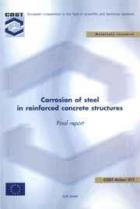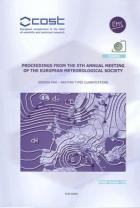
International Journal for Parasitology Aug 1999 Vol 29 No 8

Analyse Organischer Mikroschadstoffe im Wasser

Complementary Medicine Research: An International Perspective

Bioremediation - interCOST Workshop

Advanced Materials for Power Engineering Components: High Efficiency, Low Emission Systems - Annual Report 1995

Corrosion of Steel in Reinforced Concrete Structures - Final Report

Telecommunication Economics: Selected Results of the COST Action IS0605 Econ@Tel
- Author(s): A. M. Hadjiantonis and B. Stiller (Eds)
- Publisher(s): Springer
- http://www.springer.com/computer/communication+networks/book/978-3-642-30381-4
- ISBN/ISSN: 978-3-642-30381-4
This book constitutes a collaborative and selected documentation of the scientific outcome of the European COST Action IS0605 Econ@Tel “A Telecommunications Economics COST Network” which ran from October 2007 to October 2011. Involving experts from around 20 European countries, the goal of Econ@Tel was to develop a strategic research and training network among key people and organizations in order to enhance Europe’s competence in the field of telecommunications economics.
Reflecting the organization of the COST Action IS0605 Econ@Tel in working groups, the following four major research areas are addressed:
– evolution and regulation of communication ecosystems;
– social and policy implications of communication technologies;
– economics and governance of future networks;
– future networks management architectures and mechanisms.

Food Matrices: Structural Organisation and Impact on Flavour Release and Perception
- Pages: 111
- Author(s): P. Pittia, N. Cayot
- Publisher(s): EU Publications
- http://bookshop.europa.eu/uri?target=EUB:NOTICE:QSNA22256:EN:HTML
- ISBN/ISSN: 978-92-898-0024-2
- EUR: 22256
Flavour perception is related to the way aroma is released (or inversely retained) from food systems. Flavour release depends on the nature and concentration of flavour compounds present in the food, as well as on their availability for perception as a result of interactions between the major components and the flavour compounds in the food. Food compositional and structural factors, e. g. as a result of the presence of macromolecules, and eating behaviour determine perception and the extent of flavour release. The main objective of the Action 921 is to understand the impact of structural organisation of food matrices, and their changes during mastication, on perception and flavour release.

Session AW8-Weather Types Classifications
- Pages: 117
- Author(s): OE. Tveito, M. Pasqui
- Publisher(s): OPOCE
- Download from external website
- http://publications.europa.eu/
- ISBN/ISSN: 978-92-898-0025-9
- EUR: 22594
Proceedings from the 5th Annual Meeting of the European Meteorological Society.
